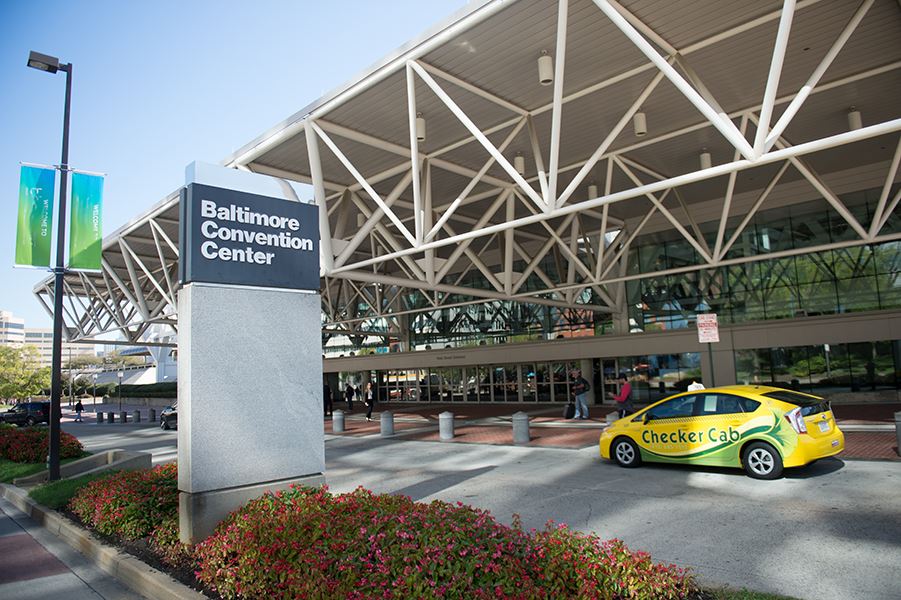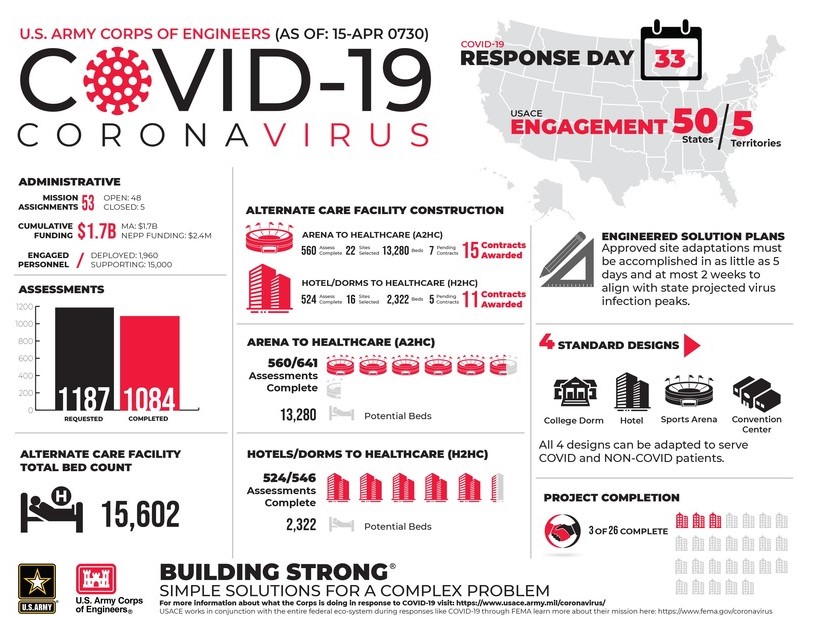
They have been described as urgent acts of adaptive re-use.
Around the country, property owners, architects, engineers, builders and emergency response professionals have been working to convert convention centers, hotels, dormitories, parking garages, office buildings, empty retail space and open air sites into field hospitals, testing sites, quarantine centers and respite facilities for medical staff battling the COVID-19 pandemic.
In Maryland, the Army Corps of Engineers recently completed the transformation of the Baltimore Convention Center into a 250-bed field hospital for patients recovering from the novel coronavirus. Meanwhile, numerous other projects are in varying stages of planning and execution.
In Carroll County, the Army Corps and local government officials have been assessing the prospects of turning Shipley Arena into a temporary hospital and renovating the armory building in Westminster to serve as a quarantine and recovery facility for people who are homeless, shelter residents or otherwise at risk.

Frederick Health has embarked on a $2.5 million, 30-day project to transform a business center on the hospital’s campus into a 72-bed, medical/surgical unit. The Whiting-Turner Contracting Company is revitalizing the shuttered Laurel Regional Hospital in a $7 million renovation that must be completed within four weeks. Meanwhile, Lifebridge Health, Kaiser Permanente, Adventist Healthcare and other systems are rapidly transforming clinics into inpatient facilities.
To assist such projects, the American Institute of Architects this month released the COVID-19 Alternate Care Sites Assessment Tool. It provides a checklist of elements to consider when evaluating the potential of a non-medical building to become a facility that can support patient care operations, mitigate disease spread and safely house patients and healthcare staff.
“This tool is geared toward flexible and rapid decision making during a public health pandemic,” said Dr. Molly Scanlon, chair of AIA’s COVID-19 task force and an environmental health scientist with Phigenics. “Our goal is to synthesize decades of healthcare knowledge and experience into a checklist reflecting the key elements of healthcare operations to reduce risk and increase safety at an alternative care site.”